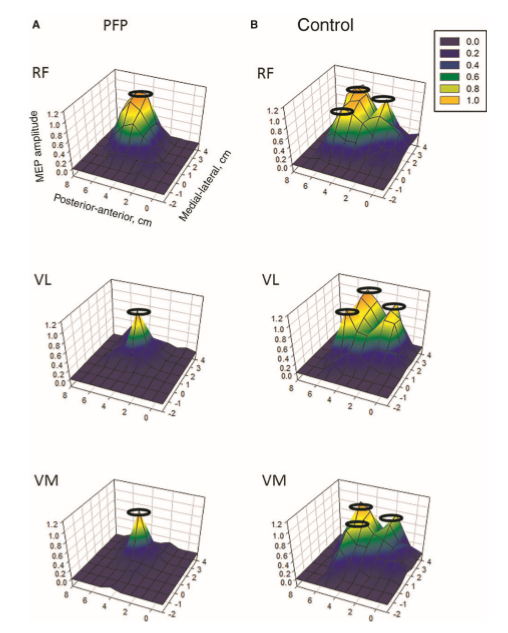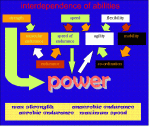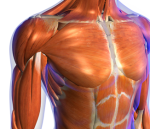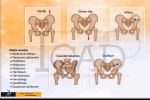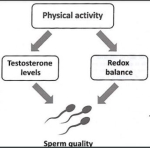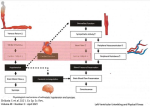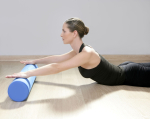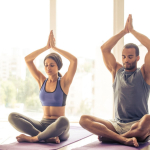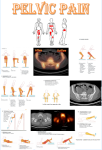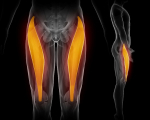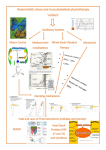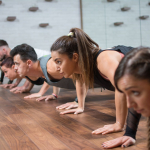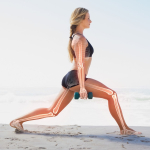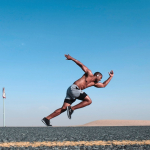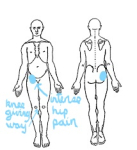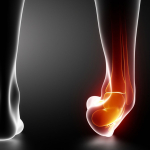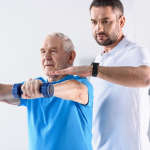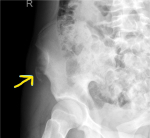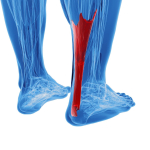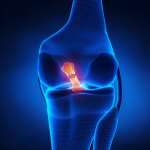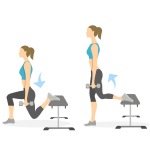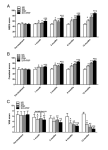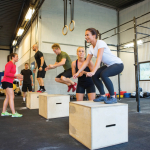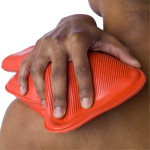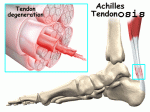A one year plan - physiotherapeutic clinical reasoning, considerations of biomechanics, in rehabilitation
Your condition shouldn’t have movement forced upon it, as this will only create muscle spasms and potential functional instability. In the early phases movement should be directed in the directions of comfort. Early phase rehab should aim to reduce muscle spasms and increase the range of movement in a functionally stable manner. So, one side of the coin is ‘stability’ and the other side ‘mobility’ and the combination of the two are synergistic co-ordination and 'agility'.
Slow movement activate the 'red' slow twitch muscle fibres which are the endurance postural and joint stabilisers. Fast movement are the fast twitch ‘white’ muscle fibres which have no resistance to fatigue. They are the 1-10 RPM muscles versus the endurance muscle repetitions of 3-4 sets of 20-40 reps, with rest time between sets being roughly the length of time it took to do the set (and sometimes) up to double that length of time. Whereas, 1-10RPM are usually of such a significant load that only 1 set is carried out or if there were 3 sets of 3 RPM then the length of time between sets would be quite long.
The clinical stage, severity as well as the irritability of the condition should be taken into consideration when considering where the emphasis of the exercise training regime lies.
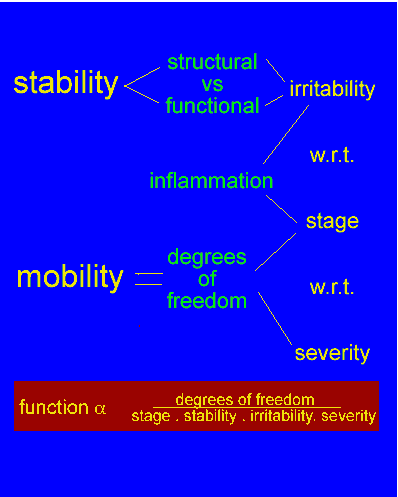
Cortical activity
Since originally writing this page in 2001, the concept of cortical input and motor control (from simple EMG and Real Time Ultrasound) has evolved. Researchers have been finding that the cortical representation of muscles change when injury occurs. Now, much greater emphasis is given to prolonged cortical drive, such as 90-180 seconds of maximum isometric input into a muscle using pure 'voluntary' drive as well as using aids such as EMS (Electro Motor Stimulation) as well as EMG and real time ultrasound. The following is an example of someone with knee pain.
See elsewhere on this site for more details : https://www.back-in-business-physiotherapy.com/78-news/latest-news/242-pain-in-the-brain-neural-plasticity
Musculoskeletal stress and the immune system
Recovery may involve analysis of technique, examination of training load (duration, frequency, intensity), adequate rest and nutrition, as well as a sound state of mind (mental strength). Over-training has been shown, within 4 weeks, after the onset of training, to be associated with increased oxidative stress both at rest and during submaximal exercise in a group of men after they underwent 7 weeks of intense military training (Tanskanen et al 2011, Med Sc Sp Ex, 43, 8, 1552-1560)
This principle applies equally to endurance athletes such as road cyclists and mountain bikers who need to avoid 'staleness' or stress from the monotomy or boredom in training and/or chronic fatigue from the high volume of training. In fact, when I was working with elite and professional cyclists in Europe, we commonly had road cyclists go running in the forest during the winter months to obtain greater strength and agility. Equally, we frequently asked skiers to mountain bike during the summer, or go hiking with very heavy backpacks up mountain sides. In one female downhill skier, she had been performing well early in the season, then began to perform poorly, to which she responded by training more. Our coaching team decided to send her to the beach for a holiday just weeks before the world championships. She became world champion!!! In some cases, reductions of stress consisted of cross training whereby road cyclists got on the track (in the former East Germany) and track cyclists got out on the road (Australian team in Mexico), as well as flat riders doing hills. Although specificity of training is of paramount importance, such cross training can reduce the risk of 'staleness' and excessive fatigue from doing too much of the same thing. Importantly, these strategies were most commonly employed during the off-season and/or in athletes who were still in their developmental phase of learning.
Training volume and intensity
Training volume needs to reflect the amount of time as well as the priorities that the person has in their life for rehabilitation exercise. Additionally, age may play a role, as the younger body tends to bounce back more quickly from injury, whereas the older body may be more experienced in returning from injury. Have you noticed that some players never seem to get injured or return more quickly from injury? This is frequently due to their emphasis on technique. Frequently more isn't better. Recovery from bouts of exercise has become a vexed question - when is too much too much? The 'three bastards in a day rule' isn't a bad one. If you meet one person in your day who you really don't like, that's unfortunate; if you meet 2 then that's doubly unfortunate; however if you meet 3, then it's not them it's you!!!...or just ask your significant other.
Training intensity will determine the amount of recovery required. High aerobic-anaerobic demand will require greater biomechanical recovery, whereas high aerobic demand will require metabolic-immune recovery. For the former, a good yoga regime and sufficient time, for the latter carbohydrate-protein supplementation within 2-4 hours of exercise, as well as sufficient calories during exercise. In some sports, such as the Tour de France, athletes never really recover fully until after the event. See : https://www.back-in-business-physiotherapy.com/we-do/nutritional-supplementation.html and https://www.back-in-business-physiotherapy.com/latest-news/324-foods-for-muscle-recovery.html and https://www.back-in-business-physiotherapy.com/latest-news/276-high-intensity-interval-training-hiit.html elsewhere on this site for more details.

Training progression
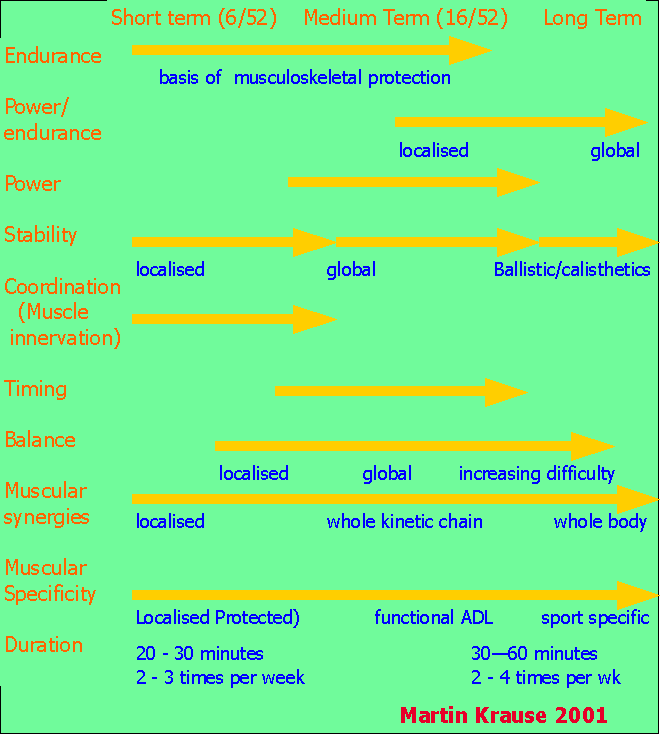
Training factors/considerations
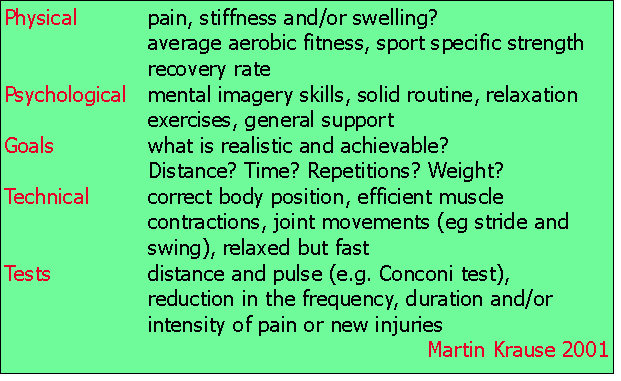
Since writing the above, post injury training regimes, rehabilitation programs have become less conservative. Balance and proprioception exercises can be undertaken quite early in the process. The process is a continuum, whereby various stages of recovery have different aims and objectives. In the acute or relapse phase, emphasis will be on 'unloading' the area whilst using other muscle synergies to protect the area, whereas in other stages emphasis will be on 'loading' the affected area progressively, taking into account clinical factors as well as age and cardiovascular condition. Importantly, some things take time. ACL, Achilles tendon ruptures involve at least a 6-9 month process, POTS may require a similar amount of time, whereas a sprained ankle or low back may be a matter of 3-6 weeks. Immune-metabolic factors as well as the persons lifestyle need to be considered. With any training prescription, my first question is 'how much time do you realistically have to do exercises?' Realistically, 6-8 exercises of 3 sets of 7-15 repetitions will take 40 minutes.
Endurance training - periodization
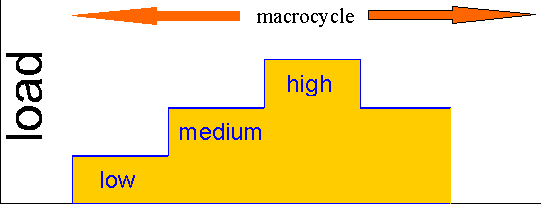
Periodisation of training allows the athlete to gradually build up their training volume and/or intensity, whilst allowing time for regeneration. Gradual increments of loading can occur, whilst reducing the risk of excessive over-loading and hence injury. Additionally, training of various intensities allows the metabolic systems to develop in parallel. Thereby the anaerobic and aerobic metabolic systems can be used to drive endurance.

Periodisation can be in macro and micro-cycles. A macro cycle might represent various seasons such as the competition season and the non competition season of build up and recovery. Similarly, during the competition season there might be micro-cycles of pre game build up and post game recovery. Interested readers on periodisation and immune biomechanical considerations should look elsewhere on this site : https://www.back-in-business-physiotherapy.com/sports-performance/periodisation-of-training.html
Power
The development of endurance may take months and up to 10 years. Strength is required to develop power, as power is equal to the product of force times velocity. Power is important for speed. Frequently, endurance athletes train slow and stay slow. They also need power which in German is called "Steigungsvermoegen".
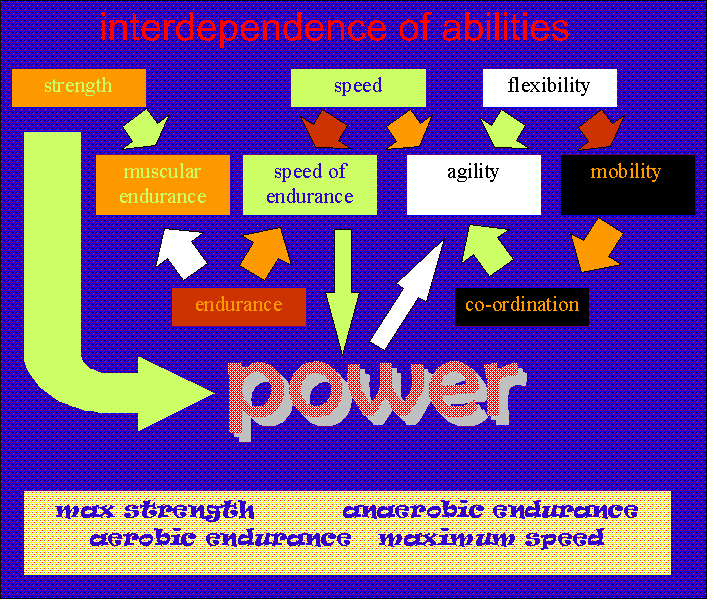
In this example from cycling research, performance power can improve by 22% through improved technique of hip extension. Biomechanics can influence the immuno-physiology and vice versa.
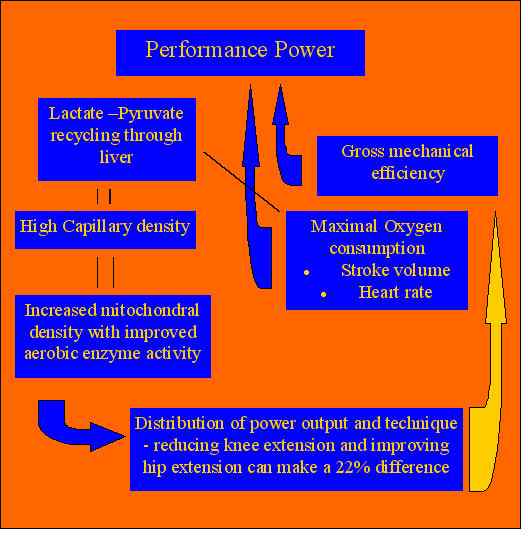
Bio-motor abilities specific to running ability may be attained using for examples eccentric (muscle lengthening) quadriceps, calf and hip muscle loading in lunging.
Biomechanics - velocity in training regimes
Power = force x velocity Work = force x time = force x displacement
- therefore, you can use speed (min weight) to create power
Momentum = mass x velocity
- inertia dictates that a body will stay at rest or uniform motion
Moment of Inertia (of a spinning person) = mass x (radius squared)
- energy is always conserved, hence, as the person brings their arms to their side, their angular and linear velocities will increase (since the mass is constant)
Impulse = force x time (change of momentum) = mass x velocity - mass x initial velocity
- therefore, 'timing' is important for training stability and co-ordination
Kinetic Energy = 1/2 mass x velocity squared = Potential energy = mass x gravity x height
- height can be used to increase potential energy which in turn can create increases in velocity
- alternatively, velocity may be used to create potential energy
- additionally, increases in weight whilst maintaining constant velocity, increases kinetic energy
Newtons Third Law : "for every action there is an equal and opposite reaction"
- therefore poor technique will result in an equal and opposite reaction in the plane of motion eg. whilst swimming freestyle and stroking too wide will result in an equal and opposite compensatory motion in the leg
- elevation of the right arm will result in equal and but opposite vector creation on the contralateral side of the body in order to maintain stability
- read a good book
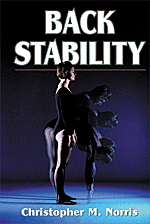
Orthotics and Biomechanics of Gait
Original : 22 July 2006
Latest Update : 6 December 2021





